Crop rotation rules for growing berries: is it possible to plant black currants and red ones nearby
Currant is a berry crop rich in vitamins and microelements. To increase yields, planting takes into account the influence of crops growing nearby, competition for free space and natural resources. Compliance with the rules of crop rotation and a competent selection of neighbors for various varieties of currants will help to achieve high yields and avoid outbreaks of diseases in plants.
In the article, we will tell you at what distance from each other to plant red and black currants.
The content of the article
- Is it possible to plant red and black currants nearby and what distance should be between bushes and rows
- Is it possible to plant different varieties of currants nearby
- The importance of observing the rules of crop rotation when growing currants
- Good neighbors for red currants
- Bad neighbors for red currants
- Conclusion
Is it possible to plant red and black currants next to each other and what distance should be between bushes and rows
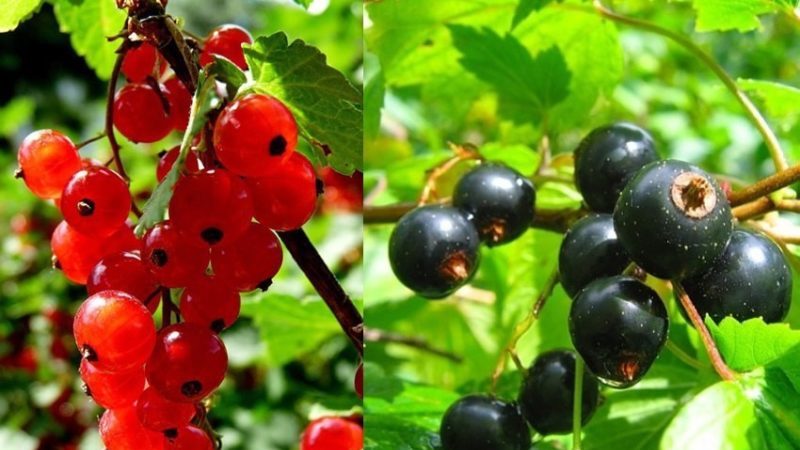
Red and black currants will not be good neighbors for each other. Black requires moist soil and shady areas... Red loves dry land and bright sunlight.
If the garden plot is large, red and black currants are planted on separate segments of the land with different humidity. It is better to plant small areas with a homogeneous soil and moisture content with one species for which these conditions are optimal.
Important! Black currants should not be planted in wetlands. This will cause root decay and plant death. Red should not be left without intensive watering.
Black and red currants have different bushes shapes. Red tends upward, black - in breadth. When planting, this fact must be taken into account to determine the distance between bushes and rows.
For red, it is recommended to leave 2 m between rows and 1-1.5 m between bushes. Black needs 2.5 m and 1.5-2 m, respectively. For white, the optimal distance is 2 m between rows and 1.25 m between bushes.
When planted close, the plants are poorly ventilated, which will lead to the development of fungal diseases. For better development and comfortable well-being, shrubs are best planted at a distance of 1.5-2 m from any type of structure in the garden.
Is it possible to plant white currants next to other species
White currants are a type of red, so planting them nearby is not only permissible, but also useful. When they are placed on the same territory, mutual pollination occurs, which leads to an increase in the yield and quality of berries.
Black absorbs nutrients faster, so it is better to plant it separately from white, so as not to lose the yield of the latter and not cause the death of the bushes.
Is it possible to plant different varieties of currants nearby
Planting different varieties side by side will lead to an increase in yield, since cross-pollination causes an increase in the number of ovaries, the berries become larger.
The varieties must be of the same species. Various varieties of red and white currants get along well side by side, and their neighborhood is favorable. But black berry varieties are best combined exclusively with each other.
Reference! Any variety is planted in a wind-protected area.
Pay attention to the short stature of certain varieties. Light-loving low-growing varieties are not planted under high ones - this will lead to disease and death of the bushes.
The importance of observing the rules of crop rotation when growing currants
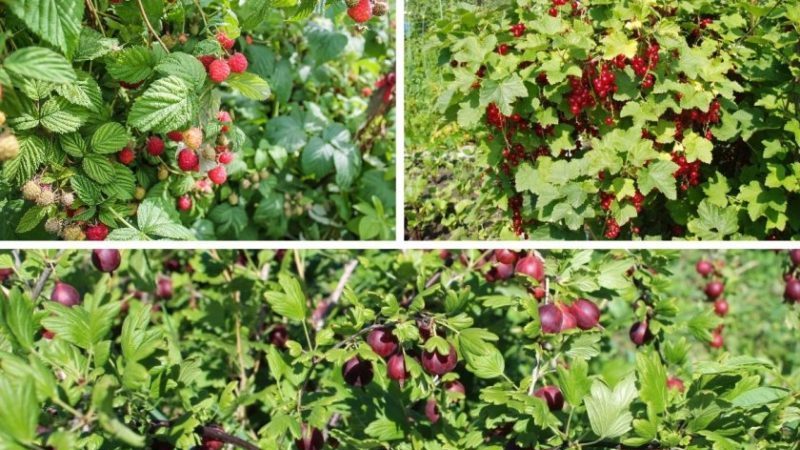
Compliance with the rules of crop rotation is of great importance not only for annual plants, but also for shrubs and trees.Crop rotation has a positive effect on the availability of nutrients in the soil, reducing the risk of plant infection.
It is not recommended to plant currants after:
- plants of the same family;
- having common pests and diseases;
- plants with the same requirements for trace elements in the soil.
The predecessors saturate the soil with organic matter and improve the quality of the soil. This berry shrub grows best after sunflower, corn, cereals. It is they who aerate the soil, saturate it with trace elements, do not emit substances toxic to currants and destroy pests.
It is not recommended to plant bushes after gooseberries and raspberries. They reduce the nutritional value of the soil and saturate the soil with pathogenic microorganisms.
Plants growing nearby are of great importance for the growth and development of currants. Among them there are competitors of this berry, and garden crops that are fully compatible with it.
Important! It is recommended to plant currants in the area where it has already grown not earlier than after 6 years.
Good neighbors for red currants
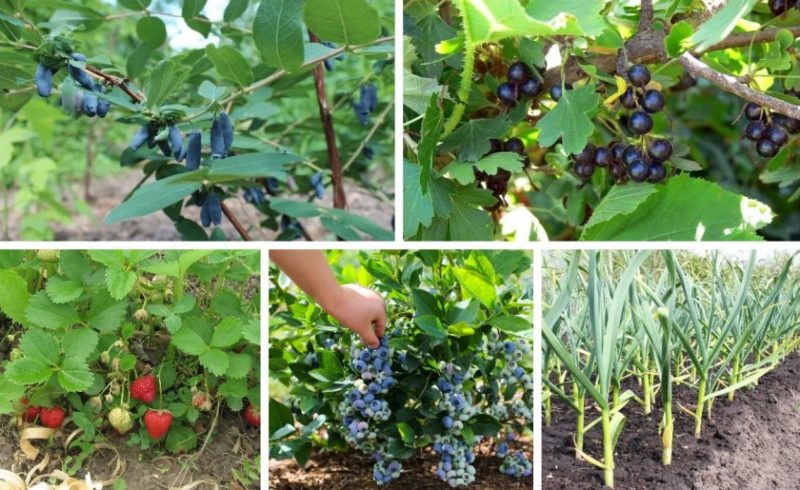
The root system of the shrub is located at an average depth, so it has few competitors in the extraction of moisture and nutrients from the soil. Plants with a shallow root system will get along well with this berry. The bush does not give much shade, so undersized garden crops can be planted under it.
Good neighbors will be:
- Onion. Does not consume excess moisture and needs light for quality development. Grows well between red currant bushes. The pungent smell of onions scares away most pests from them, in particular, kidney mites.
- Gooseberry. Optimal neighbor for red berries. Both crops bloom at the same time period and cross-pollination significantly increases yields. The root system of these berry bushes is located directly below them without unraveling to the sides. This allows them to get moisture and nutrients from the soil without limiting each other.
For black
Suitable neighbors for black currants:
- Honeysuckle... Shrubs develop well and bear fruit when they are nearby. Their chemical composition is similar, so the neighborhood will be favorable.
- Yoshta... Being a hybrid of gooseberries and currants, it gets along in the same area with these crops.
- Strawberry. The pungent aroma of currants scares away many pests from strawberries, and frequent watering has a beneficial effect on the size and sweetness of the berries.
- Garlic. Kidney mite - a dangerous pest of currants - is afraid of the spicy smell of garlic. This neighborhood has a positive effect on berry bushes.
Bad neighbors for red currants
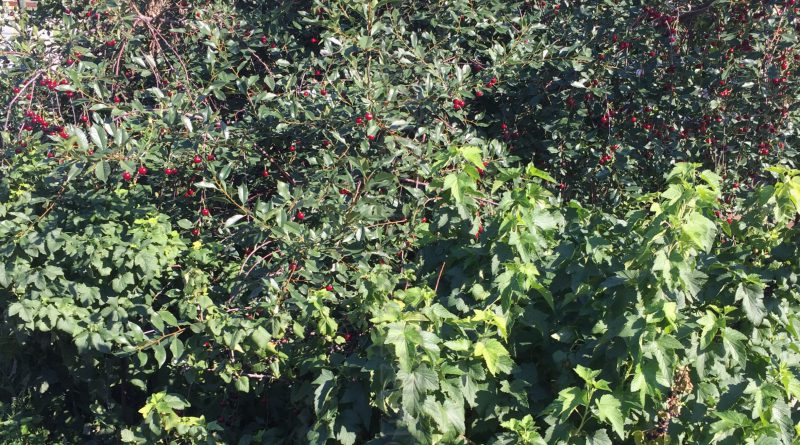
Red currant has competitors in the plant world. To prevent low yields and possible death of the shrub, it is recommended to plant it at a distance of 5 m from these plants:
- Plum. This plant is not a competitor in the fight for nutrients, but it has a shady crown. Without sunlight, the berry shrub ceases to bear fruit and grows poorly.
- Sweet cherry... It has an overgrown rhizome, which deprives the bushes of nutrients. This leads not only to low fruiting, but also to possible death.
- Raspberry... It has a large root system that penetrates deep into the soil. It not only deprives the shrub of nutrition and moisture, but also interferes with its development, reducing the living space due to the growth of young growth.
- Cherry... The culture shades the shrub, its root shoots deprive the currant of nutrients. In addition, plants require different soil compositions.
For black
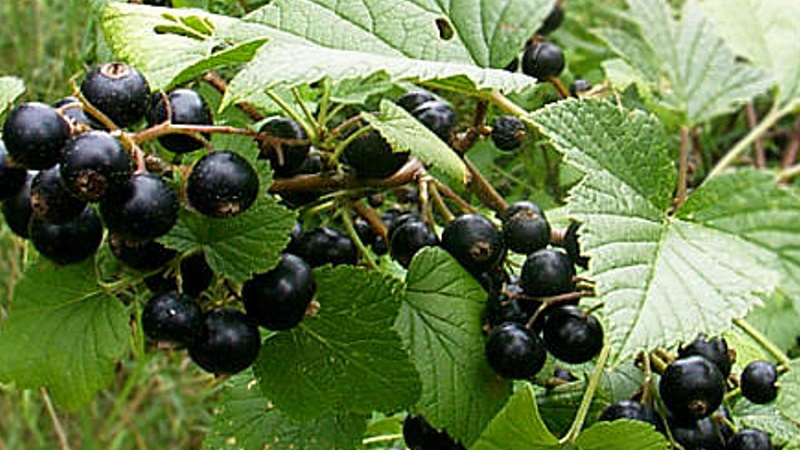
Garden plants not only fight for space, light, water and nutrients, but also have common pests.
Unfavorable neighborhood:
- Red and white currants. Different needs for sunlight and moisture lead to the fact that the yield of shrubs drops to almost zero.
- Gooseberry. White gooseberries are prone to the same diseases as black berries.The pests of these plants are also the same. Planting them together will lead to massive development of diseases and uncontrolled reproduction of pests.
- Raspberry. It grows, does not allow other plants to develop, and absorbs all moisture.
Conclusion
To grow strong, healthy berry bushes, you need to follow the rules of crop rotation. It is important to choose the right site for planting a plant and choose the right neighbors.